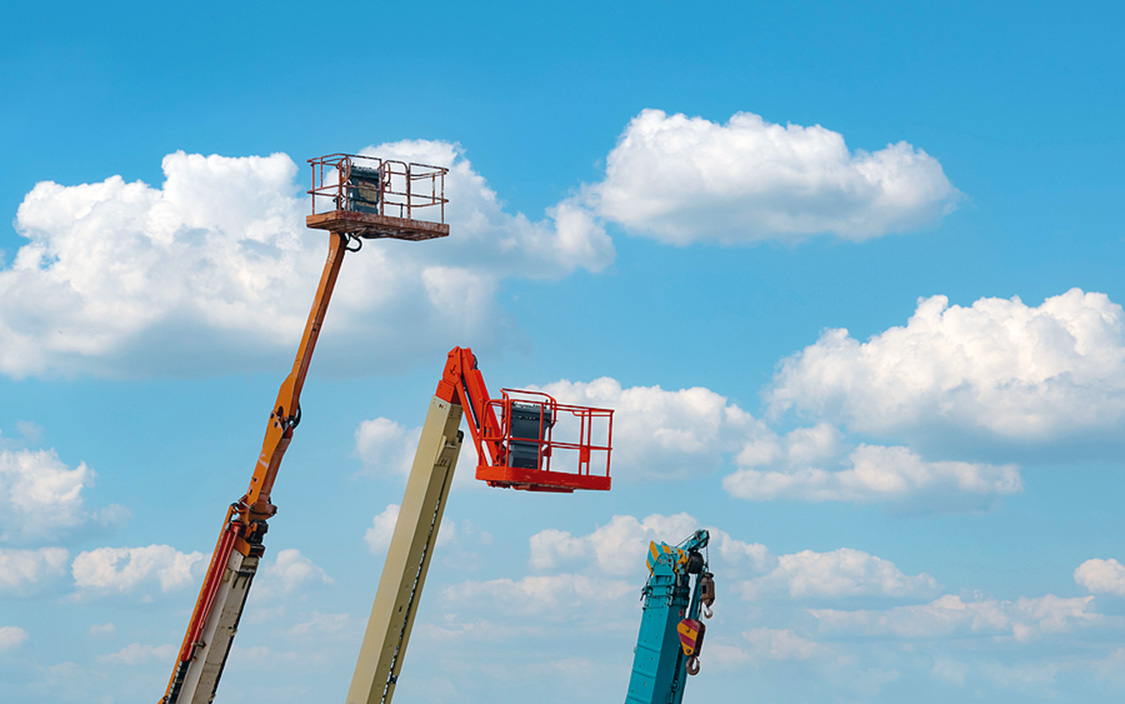There are several factors to consider when you need to choose the right lift for a particular job. The right lift choice should tick the safety, efficiency, and cost-effectiveness boxes. It is also vital to select a lift that will suffice for most of your operations. Striking this balance is a challenging task. That is why we bring you this guide, to help you select the best lift for your job requirements.
1. Lifting Capacity
The lift capacity is one of the significant considerations to make. Working within the lift capacity is ideal for efficiency and workers’ safety. Contractors should select lifts based on the expected load. It includes the estimated weight of workers on the lift, plus any equipment and tools.
2. Worksite Conditions
While each lift design supports specific conditions, some are ideal for versatile operations. Contractors should first familiarize themselves with the site before renting a lift. It is also essential to envision how the job progress will affect the site conditions.
Identifying the site conditions will help to determine the suitable lift to acquire. For example, manually propelled scissor lifts are ideal for confined indoor spaces with narrow paths. You may also need a lift with non-marking tires when doing ceiling repair work in an office.
The outdoors, sometimes with challenging terrain, requires an adaptable lift for efficiency. Lift grades are an essential factor. Rough terrain requires lifts with larger and softer wheels. You may also need a lift with a self-leveling mechanism if your site is sloppy.
Other site considerations include lift movement and transport needs. How many locations will you need the lift? And, how far apart are they? Choose the right lift that you can quickly move from one point to another, depending on your job needs. Site conditions will help you narrow down your choice to an ideal and efficient lift.
3. Jobsite Accessibility
Different lifts have different reaches, both vertically and horizontally. Choose the right lift according to the location of your job. Additionally, consider how the project’s progress may affect your space.
Some job sites may have obstacles on the ground, in the air, or both. Versatile machines have excellent efficiency in such conditions. For example, scissor lifts may be very effective for indoor jobs requiring heavy vertical lifting, but their reach is limited.
Boom lifts are more flexible and applicable over a wide range of uses. Articulated booms are ideal for evading obstacles. They can reach over or around aerial obstacles easily. Smaller articulated booms are also usable indoors and can cover more space than their scissor counterparts.
Telescopic booms are ideal for reaching greater heights at considerable capacities. These are ideal for lifting materials to tall buildings for jobs like roofing, where you need clear working spaces.
4. Additional Considerations
Knowing any specific restrictions on a job site will help you narrow down your choice. It will also help you choose the right lift features and accessories. Some clients have regulations regarding noise and emissions. For such sites, a gas/LPG-powered lift is ideal. Other considerations may include work in hazardous areas such as gas plants and other petroleum product handling factories.
Conclusion
Renting the right lift for your job is vital to completing the job safely and on a budget. The wrong choice will cost more, especially if you have to rent another one in the middle of your project. Consider the required capacity, job site accessibility, and general conditions to make an informed decision. Additionally, ensure that your machine adheres to any unique site specifications.
Vandalia Rental has a wide selection of lifts for your next job. We also offer free expert advice on the best lift for your specific job and site conditions. For more information, contact us today.


